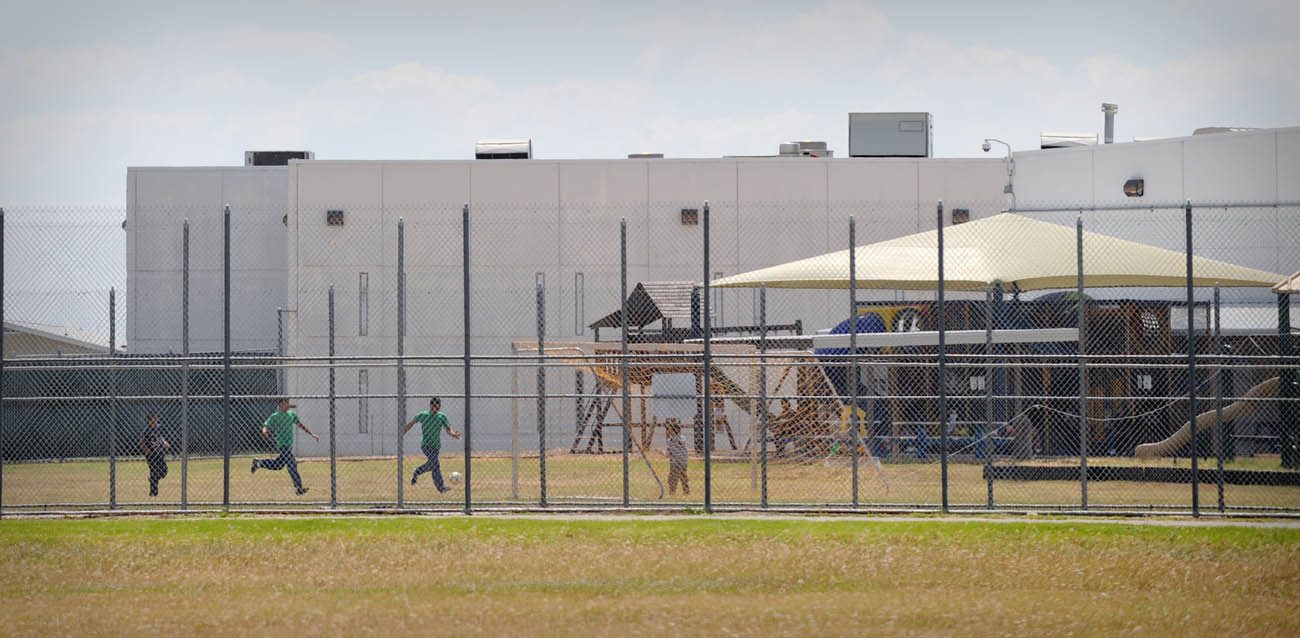UNITED NATIONS (CNS) — Migration is not a crime and vulnerable migrant and refugee children should not be detained as if they were criminals, speakers said at a U.N. program Feb. 21.
At issue is the treatment of children who cross international borders with or without family members. According to international law, they are entitled to due process in the assessment of their legal status, entry and stay in the receiving country.
In addition, the United Nations’ 1989 Convention on the Rights of the Child and its 2016 New York Declaration for Refugees and Migrants committed the international community to work to end the harmful practice of child detention.
[hotblock]
More than one dozen speakers addressed “Ending the Detention of Migrant and Refugee Children: Best Interest Determination and Alternatives to Detention” in a fast-paced discussion hosted by the Permanent Observer Mission of the Holy See to the United Nations.
U.N. agencies estimate more than 65 million people are currently stateless or forcibly displaced from their countries and 51 percent of them are children. In many countries, newly arrived migrants and refugees are held in detention facilities similar to those used for criminals.
“Regardless of the conditions, detention has a profound impact on a child’s health and development,” including anxiety, symptoms of post-traumatic stress disorder and long-term cognitive and physical effects, said Ted Chaiban, UNICEF director of programs.
The Convention on the Rights of the Child acknowledges that detention is not in the best interest of children, but the practice continues because people mistakenly think it works as a deterrent, is more effective and less expensive than alternatives, and is used only as a last resort, Chaiban said.
“It’s expensive, often fails to meet its objectives and does not deter would-be migrants. It’s detrimental to children and drives them underground, into the hands of traffickers” and away from legitimate assistance, he said.
“Vulnerable people on the move are a passionate priority of Pope Francis,” said Jesuit Father Michael Czerny, an undersecretary for the Migrants and Refugees Section of the Vatican Dicastery for Promoting Integral Human Development. He presented a video in which Pope Francis described the obligation to welcome, protect, promote and integrate migrants, refugees and asylum-seekers.
[hotblock2]
Donald M. Kerwin Jr, executive director of the Center for Migration Studies, said detention should be used only for legitimate purposes, such as identity checks and threats to national security. “It can never be an end in itself. Most conditions can be met by alternatives to detention, and the least intrusive and restrictive alternative should be used,” he said.
“The alternative to detention should not be so restrictive that it becomes an alternative form of detention,” Kerwin said. The best option for children is no detention at all, he concluded.
Father Czerny said there are variations among cultures about what “the best interest of the child” means, but all should focus on the integral human development of every child, including children yet to be born.
Msgr. Robert J. Vitillo, secretary-general of the Geneva-based International Catholic Migration Commission, said determination of a child’s best interest is a process that should include many steps for assuring the dignity and well-being of the child.
He said among them are “proper identification; an adequate registration process with relevant documentation; the opening of an individual case file; tracing; the appointment of a guardian; the provision and monitoring of temporary care arrangements; and, perhaps most importantly, direct discussion with the children on their views concerning best interest planning for their safety and future.”
Alternatives to child detention vary widely. Chaiban said Ireland prohibits child detention altogether; Spain, Portugal and Italy allow it but don’t use it; and Zambia has guidelines and protocols in place. Sweden accommodates unaccompanied children in the receiving community.
Father Czerny said “best practices” may include “legal channels for family reunification, mechanisms of regularization that would allow children to live with their parents, and educational and employment opportunities for young people.”
Chaiban said while national approaches vary, many programs work closely with individual children, provide clear information about the process and expectations, and maintain communication throughout all phases of assessment and determination of whether the child will stay in the country, return home, or move to a different country.
Ashley Feasley, director of policy for the U.S. Conference of Catholic Bishops’ Migration and Refugee Services, said the CARA Family Detention Pro Bono Project in Dilley, Texas, is a promising example of aid to children and their families in detention centers in the United States. The Catholic Legal Immigration Network is part of CARA.
Msgr. Vitillo said legislation enacted by the government of Italy in April 2017 is an example of compassion and duty toward a record number of unaccompanied and separated children who arrived in Italy in 2016. The law gives children a sense of predictability in their uncertain lives after risking so much to get to Europe and also is a model for other European countries, he said.
The new law limits the time children spend in reception centers, prohibits forcible return to countries where a child may be harmed, promotes trained guardianship, foster care and host families, and allocates funds to municipalities, groups and caregivers to help them cope with the influx of refugees and migrants.
Representatives to the United Nations from Germany, Uganda and the European Union, members of U.N. agencies, and speakers from nonprofit agencies described the challenges and successes of their specific approaches to migrant and refugee children.
PREVIOUS: Christian leader, English bishop add to outcry over attacks in Syria
NEXT: Prayer for peace in Congo, South Sudan a call to action, cardinal says




Share this story